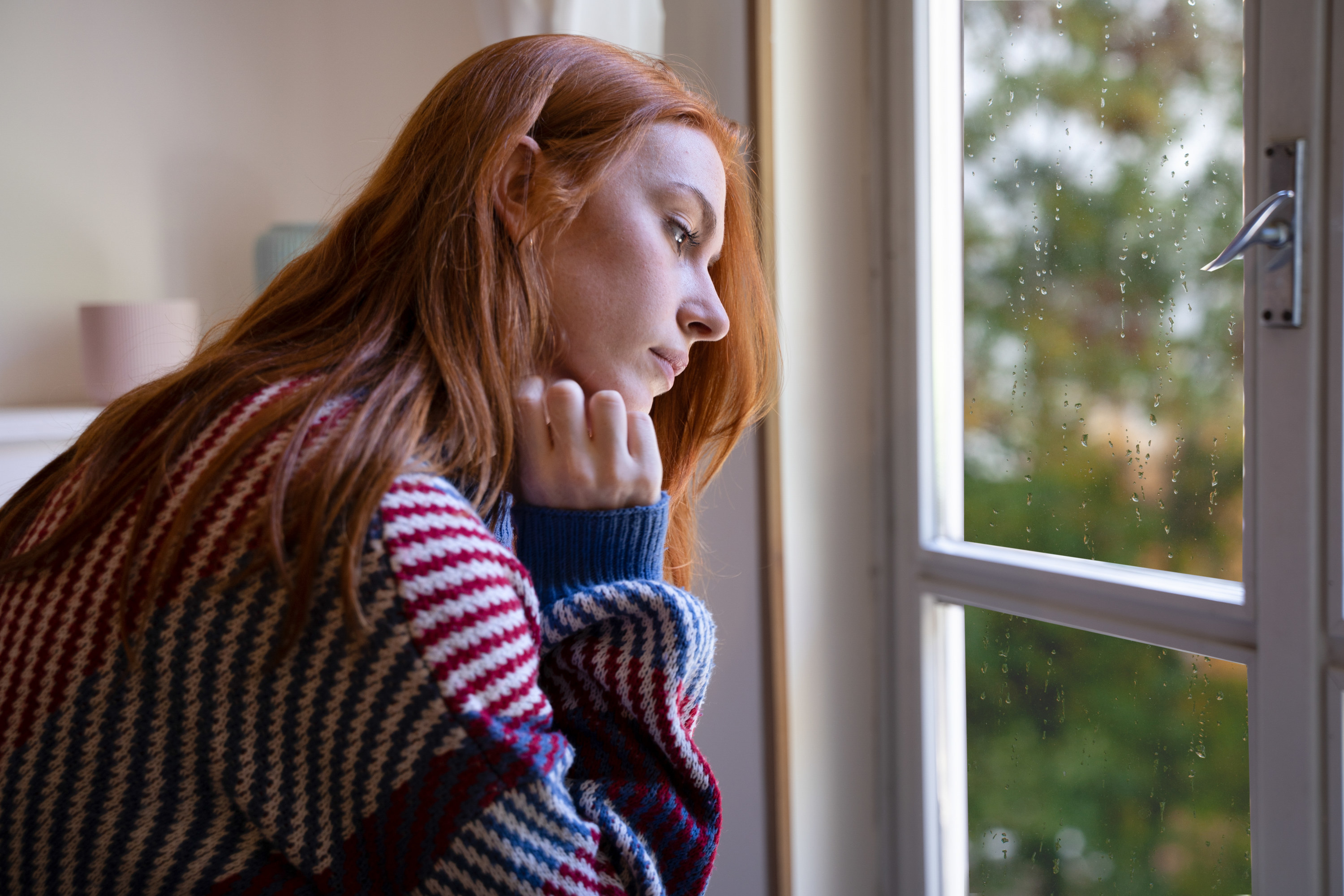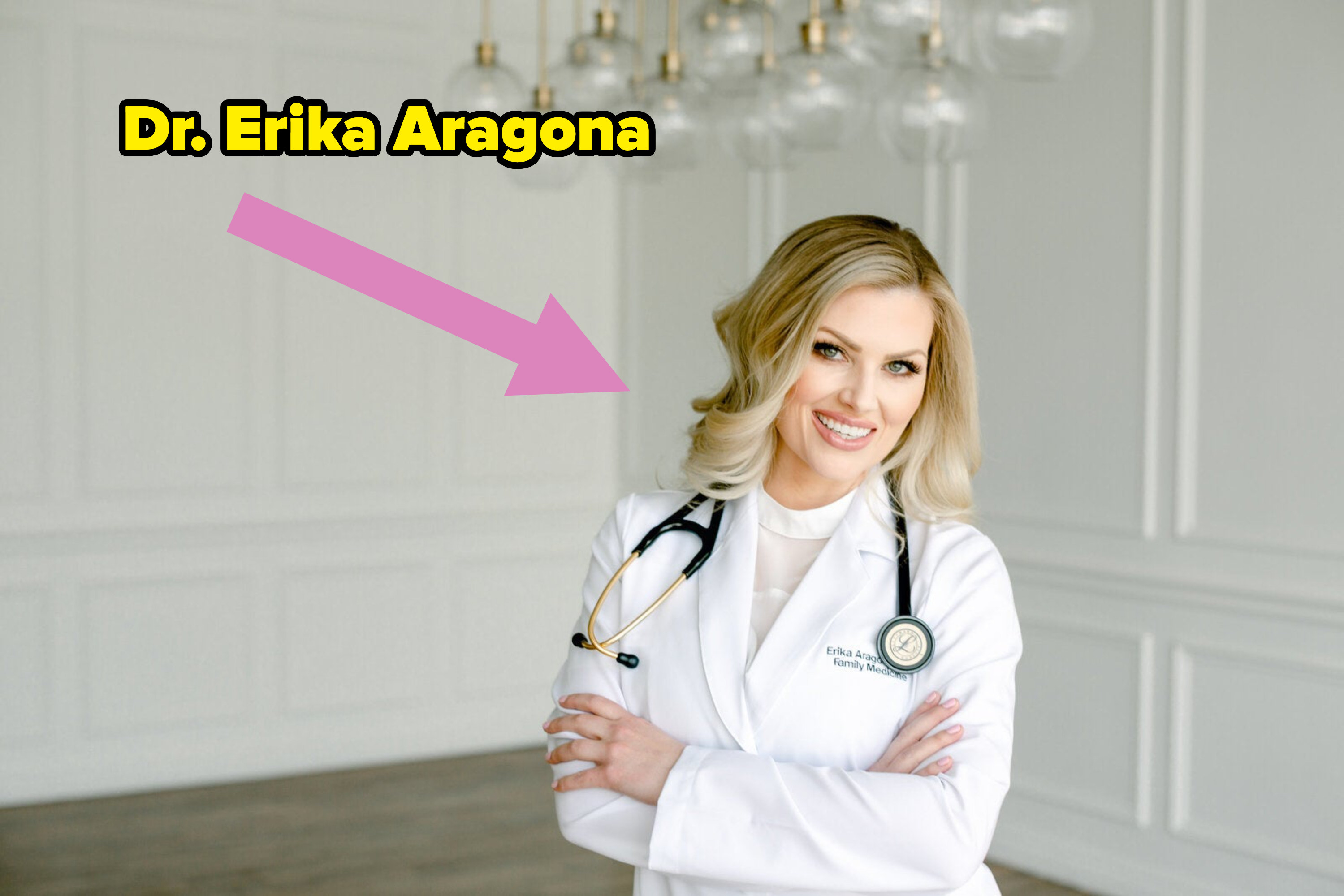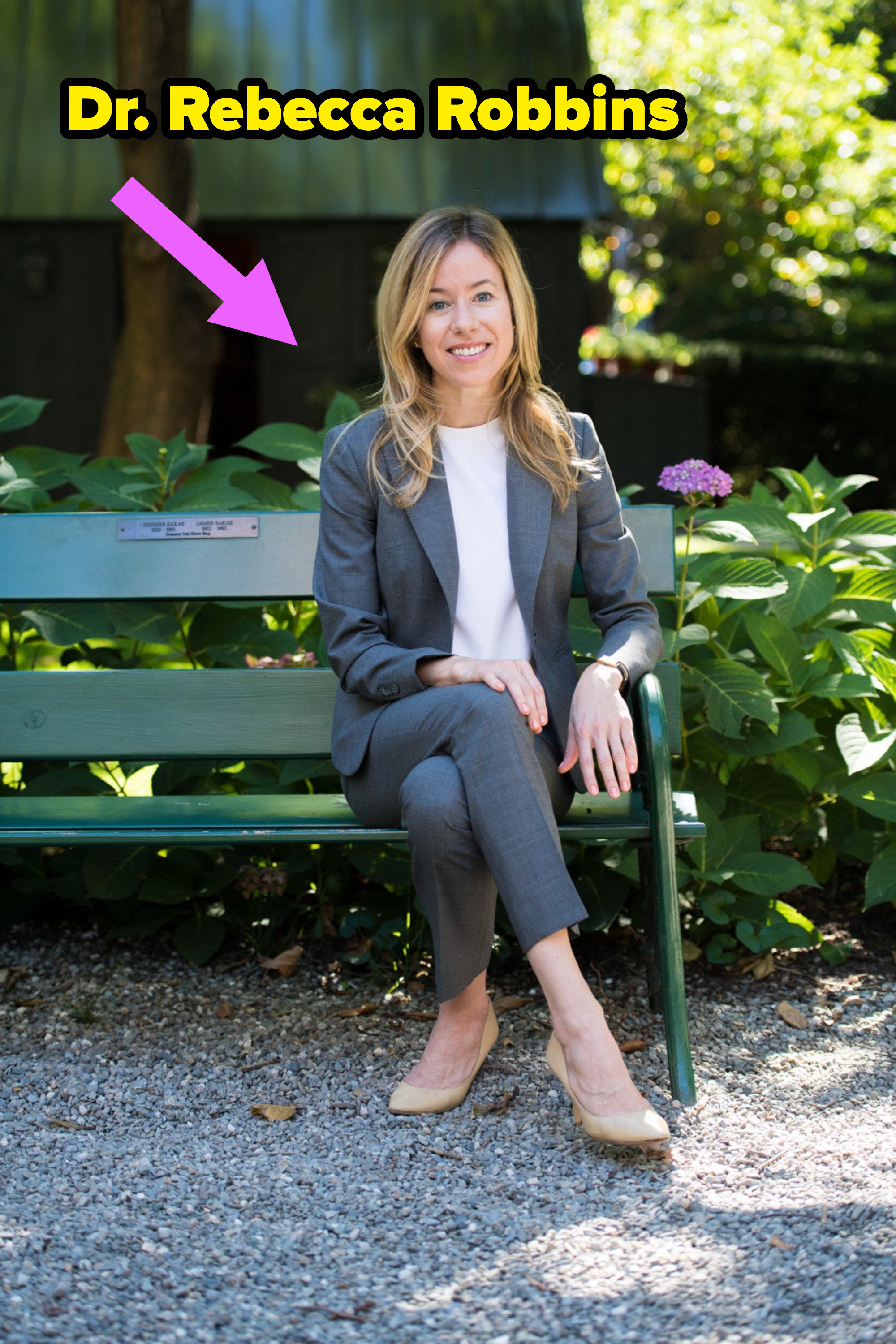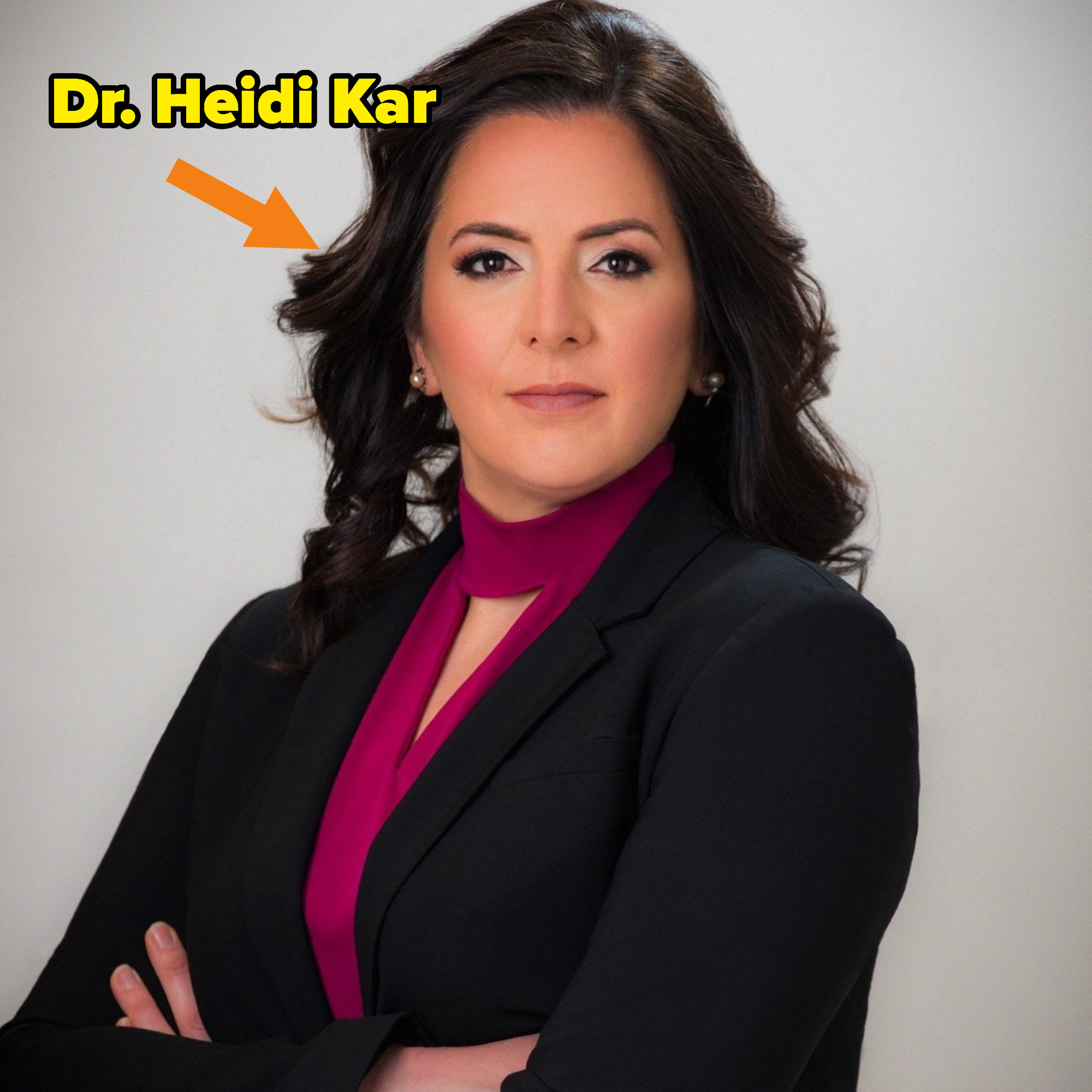Even though most Americans look forward to the holiday season, there's a type of depressive disorder that affects around 10 million Americans around late fall and early winter — and it's called Seasonal Affective Disorder, otherwise known as SAD.

According to the American Psychiatric Association, Americans who suffer from SAD — which is also known as Major Depressive Disorder with a seasonal pattern in the Diagnostic and Statistical Manual of Mental Disorders (otherwise known as the DSM-5) — tend to have the most difficult time during January and February. However, SAD can also begin for some around November when Daylight Savings Time occurs.
This is because it's believed that SAD is caused by shorter daylight hours and less sunlight — and due to this shift in sunlight, people's biological internal clock, or circadian rhythm, is negatively affected, which has the possibility to disrupt their sleep cycle and cause depression symptoms to occur.
But even though a large number of Americans might experience this seasonal type of depression, the symptoms can vary drastically per person, which is why it might be hard to diagnose.

Of course, even having just a few of these symptoms can be incredibly disruptive to one's daily life — so, to help better understand what is believed to cause SAD and how to manage or cope with the "winter blues," we connected with several health experts to provide a wide range of perspectives — since SAD can affect so many aspects of one's life.

Here are the experts:
What causes SAD?

How to combat SAD, according to an immune health expert:

But even though these imbalances may occur, Dr. Aragona explained this is why it's important to maintain a healthy immune system because "it can help with balancing and creating a stronger environment for one’s body to combat these irregularities."
For instance, one of the ways you may be able to maintain a healthy immune system is by incorporating the below habits into your daily routine.
• Maintain a healthy sleep schedule: "Adequate sleep helps strengthen immune systems — and adults should aim for seven to eight hours a night. (It's important to note that depressed feelings can interfere with sleep, too.) "You can do this by practicing mindfulness through meditation and using self-calming techniques to help boost energy, reduce stress, and improve immunity," said Dr. Aragona.
However, if you're having consistent issues with sleep, it might be worth examining your sleep environment (aka your bedroom) as well as speaking with a medical professional.
This means understanding how your external environment is impacting your sleep (i.e. are you a light sleeper? These expert-backed tips might help.)
• Maintain a healthy diet: "Incorporating vitamin-rich foods, exercising regularly, and being mindful of water intake can significantly help improve mood and boost immunity," she said.
• Take a vitamin D supplement: "This will give the body an extra immune boost, especially since Vitamin D levels are usually lower during the winter months," she said. However, while a few studies have been conducted to test this theory, it's important to note that it's unclear whether or not vitamin D supplements actually help with symptoms.
• Exercise that works for your body: Studies have suggested that habitual exercise may regulate the immune system and even offset immunosenescence.
But while there are new things you can incorporate into your daily routine, Dr. Aragona wanted to reiterate that it's important to keep to the basics when it comes to having and maintaining a healthy immune system, like washing hands regularly and avoiding close contact with anyone who is known to be ill. This will give the immune system an extra layer of protection, so energy can be focused on supporting one's mental health (like managing or coping with SAD).
How to combat SAD, according to a sleep expert:

"There is a well-documented bi-directional relationship between sleep difficulties and depressive symptoms, such as SAD symptoms," she told BuzzFeed. "In other words, sleep difficulties or a poor sleep schedule (e.g., maintaining an inconsistent sleep schedule) and depressive symptoms mutually impact one another."
For instance, Dr. Robbins said that when people experience depressive symptoms, sleep may be more of a challenge, and if we experience sleep disturbances, people are more likely to experience depressive or anxious feelings. "Maintaining a consistent sleep schedule is one of the rudiments of sleep hygiene and may buffer against risk for SAD," she explained.
So, how does one maintain a consistent sleep schedule? Dr. Robbins provided a small list below:
• Speak to your healthcare provider: "This can be a serious condition that requires pharmacological intervention. There may be instances where behavioral treatments and specifically light therapy may be beneficial. Light therapy refers to sitting in front of a device that emits blue daylight and spectrum light at specific times," Dr. Robbins told BuzzFeed.
• Keep the same sleep and wake time every day: "Waking up at different times every day can confuse our circadian rhythm and exacerbate feelings of depression or anxiety during the winter months and among those suffering from SAD or SAD symptoms. Try to pick a time you can fall asleep Monday through Monday, including the weekends," she said.
If you're looking for a device that will signal you to go to sleep and wake you up more easily, use sleep devices that mimic sunsets and sunrises like this one and this one.
• Make time for exercise: "This will release endorphins, which is a natural mood elevator and can help combat depressive and anxious feelings," she explained.
• Capitalize on natural sunlight as much as possible: "Consider walking to the next subway stop to get some extra sunlight in the morning or going for a walk around lunchtime if you feel comfortable and able to do so," she explained. "Exposure to natural light and fresh air are essential parts of a healthy sleep schedule."
Even just sitting outside for 10-15 minutes is key to receiving proper vitamin D exposure.
• Use light therapy: "Always talk to your doctor first, but light therapy is one evidence-based treatment for SAD. Your healthcare provider can offer recommendations on the best light for you to purchase," she explained.
According to a 2019 study, to see results, one will need to use a fluorescent light box with a diffusion screen for either 30 minutes at 10,000 lux or one to two hours at 2,500 lux.
How to combat SAD, according to a mental health expert:

"People with SAD often have negative thought patterns after wintertime, and these thought patterns lead to negative emotional experiences," she explained. "It isn’t clear if these thoughts help to cause SAD or if they are effects of SAD, but regardless, psychological treatment to address negative thinking patterns can be extremely helpful, as is true for all types of depression disorders."
Dr. Kar further explained some other treatment plans one can use to aid with mental health:
• Engaging in psychological treatment, specifically Cognitive-Behavioral Therapy: "CBT has been shown to be as effective in treating SAD symptoms as has light therapy," she said. This is because "whenever any of us struggle with something difficult," Dr. Kar began, "we can fall into very negative thinking patterns that cause other negative effects in our lives, whether it's in our decisions, our relationships, and/or our general ability to feel positive and hopeful. Since many people with SAD have or do struggle with other types of depression, it is very important to look to therapy for long-lasting effectiveness."
"More importantly, though, research suggests that the positive long-term effects from this type of therapy seem to outlast the effects from light therapy," Dr. Kar adds.
However, according to a 2004 study by the Journal of Affective Disorders, it's been hypothesized that CBT would be comparable in treatment to light therapy and using these two treatments at the same time would grant "additive benefits in both the short- and long-term."
• Taking antidepressants: "Since SAD, which is a subform of major depressive disorder, is associated with low serotonin activity, antidepressants specifically focused on increasing the available serotonin, i.e. 'Serotonin Reuptake Inhibitors' or SSRIs, can also be helpful to enhance mood," she said.
But even though controlled trials have suggested that antidepressants are effective in the treatment of SAD, it's important to talk with your doctor to find the best treatment plan for your mental health.
How to combat SAD, according to a nutrition expert:

And while there is no absolute diet or food that can reverse or cure SAD, according to Dr. Shah, she believes the goal is to support the gut bacteria that 'speak' to the brain and modulate mood. "For instance, higher fiber foods mean that we eat whole fruit (instead of drinking the juice version); enjoy fermented foods like apple cider vinegar or yogurt; and consume foods high in polyphenols like tea, berries, spices, and greens," Dr. Shah explained. She also provided other meal suggestions below:
• Eat one salad a day: "It can have baby spinach, arugula, carrots, cucumbers, and more," she explained. "Brightly colored vegetables like bell peppers often signify that polyphenol — a gut-loving compound — is inside."
• Incorporate cinnamon, turmeric, ginger, and garlic into your food: "Gut bacteria adore herbs and spices," she said.
• Take a shot of apple cider vinegar: "This is an often overlooked fermented food that is invaluable for the gut," she said.
In addition to maintaining one's gut health, we can also eat certain foods to potentially boost dopamine and serotonin levels, which are two of our happiness hormones.
• To boost dopamine in winter: "I recommend foods high in tyrosine like cherries, almonds, bananas, fish, and unprocessed meat," Dr. Shah said.
• To boost serotonin in winter: "There are foods that are high in tryptophan like eggs, dairy, turkey, and tofu mixed with a healthy carbohydrate like sweet potato or oats."
